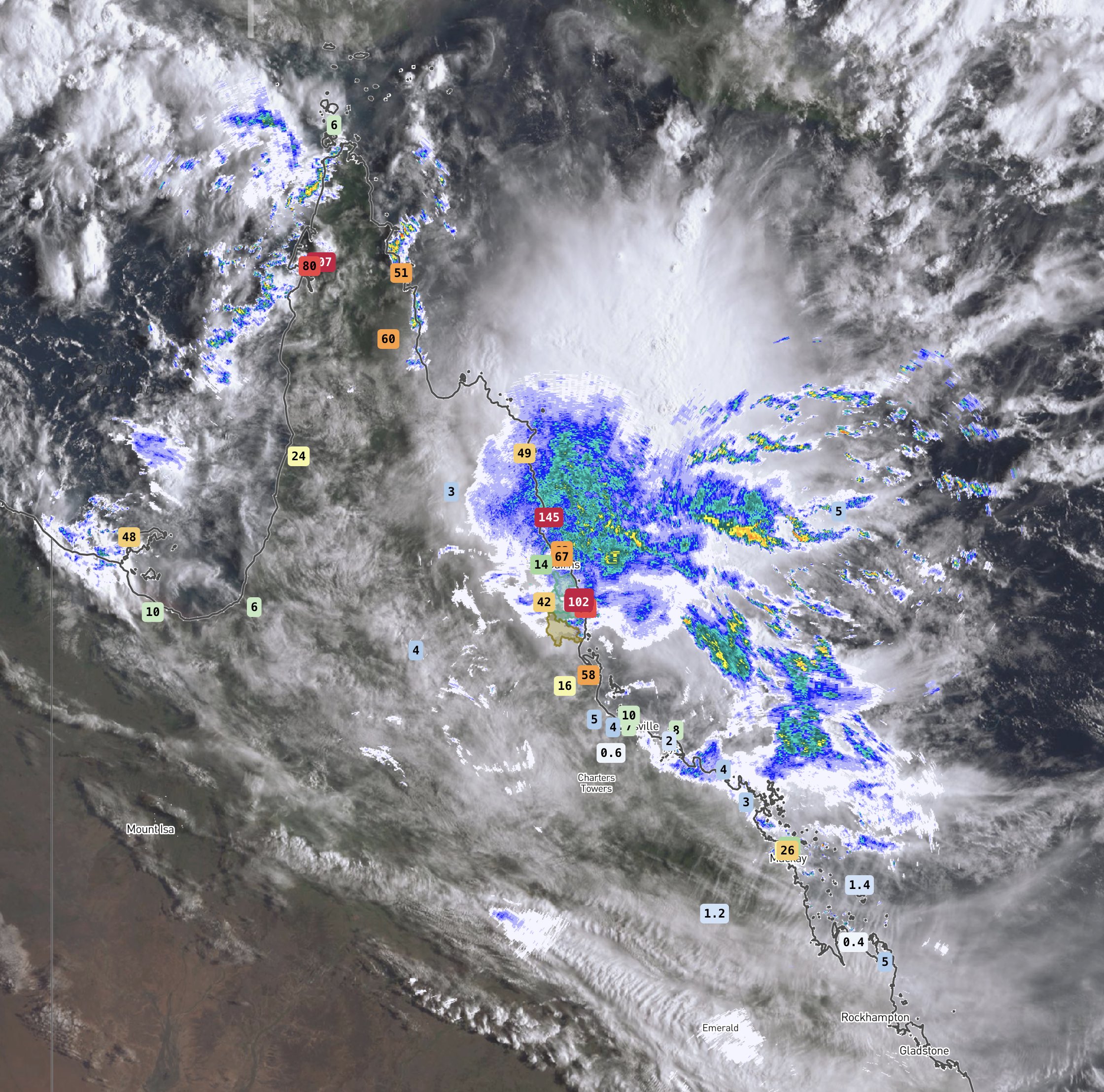There have been a lot of scary sounding terms used to describe the East Coast Low off New South Wales.
‘Bomb cyclone’, ‘bombogenesis’, ‘rain bomb’... all very threatening, and involving the word ‘bomb’.
Let’s get to the bottom of this, because the bomb here is very different to something you would see in a war zone.
On a weather map you see high’s, low’s, trough’s and cold fronts. These are the features that highlight parts of the pressure pattern (the lines).
There are a few easy things to see what is going on, like where the pressure lines are well spaced the wind is light, and where the pressure lines are close together the winds increase.
You can also tell which way the wind is blowing because our winds travel clockwise around a Low and anticlockwise around a high.

The low off the NSW coast very quickly dropped pressure, so much so that it met the criteria for rapid development of 24hPa in 24 hours. On Sunday night it was very weak on 1014hPa, and by Monday night it was a powerful low on 988hPa. It is now 986hPa.
We use the terms High and Low to denote the highest or lowest point of pressure, but the scientific term for these is cyclones.
A low is technically a cyclone, and a high is technically an anticyclone.
When a low is in the tropics and meets certain criteria it gets the new term ‘tropical cyclone’ (also known as ‘typhoon’ or ‘hurricane’ in other parts of the world).
This low off the NSW coast underwent rapid cyclogenesis, a rapid development into a deep cyclone.
And this rapid development (of 24hPa in 24 hours) is known as explosive cyclogenesis or bomb cyclogenesis - coined by a professor from MIT in the US back in the 1970s.
Professor Sanders used the word bomb to describe the explosive element, and that is how it is defined in the American Meteorological Society’s Glossary, and what you will see it referred to in meteorology textbooks.
We get these bomb cyclones often around the globe, most regularly seen out to sea.
When they develop near a coastline the effects become significant.
One of them in 2007 ran a bulk carrier ship aground in Newcastle, called the Pasha Bulker.

I remember this one well, because I was on shift as a forecaster at the Weather Bureau at the time.
Our current beast of a weather system is bringing the typical weather we see when a deep low is located just off the coast.
The rain is heaviest near the low and to its south (because our winds travel clockwise around a low). To the north it feels a world away in bright sunshine.
Winds are damaging (over 90km/h) to locally destructive (over 125km/h).
These beasts stir up the ocean, with hazardous surf and coastal erosion.
When will it end? When the low moves away, which it is likely to slowly do later on Wednesday into Thursday.
.png)




.png)